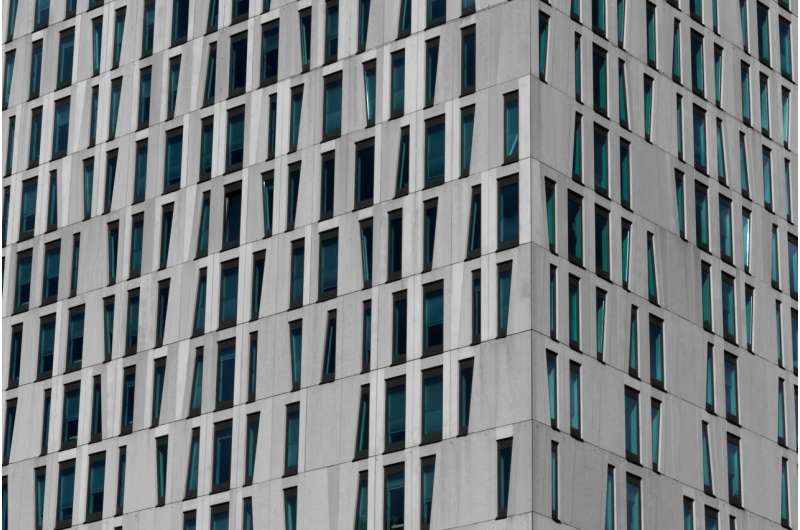
Researchers are going beyond conventional solar panels in a bid to generate heat and electricity from the other external surfaces of buildings.
In social housing on the outskirts of the southern Dutch city of Eindhoven, Renske Crone was delighted with an experiment in 2022 involving her apartment: it was outfitted with panels that produced energy from the sun.
But her new equipment was distinctly different from the solar panels—also known as photovoltaic modules—visible on countless rooftops in Europe and elsewhere. Instead of producing electricity, as photovoltaic modules do, Crone's panels supplied thermal energy and were installed on the facade of the building.
Thermal thrill
The gray panels, coated with aluminum and resembling laminate flooring, took up 15 square meters. As a result of the test, Crone's home and water got heated with renewable power instead of polluting natural gas—even on cloudy days—and energy bills fell.
The "house is energy-positive, free from gas, with a net-zero energy bill," said Crone, who has since moved to another home. "Who doesn't want that?"
The new energy technology emerged from a research project to make use of all buildings' external surfaces rather than just rooftops to generate power. Called Envision, the project ran for five years through September 2022.
The initiative reflects stepped-up EU efforts to reduce buildings' emissions of greenhouse gases as part of the fight against climate change. Buildings account for around 36% of emissions in Europe and are part of an EU renovation wave.
In the EU, roughly half of buildings' facades are unused.
Infrared band
The bands of radiation that reach the Earth's surface from the sun include visible light, infrared and ultraviolet.
Whereas regular solar panels make use of visible light, those on Crone's home relied on the infrared spectrum and didn't require the external wall to be orientated in any particular direction. Visible light constitutes roughly 43% of solar radiation while infrared accounts for 50%.
Retrofitting homes so they use both visible light and infrared radiation promises big advances in the harnessing of energy from the sun. Any external walls can be retrofitted with the Envision technology.
"With our panels and photovoltaic cells on the roof, you can have sufficient energy to make the house energy-positive," said Bart Erich, a research associate in applied physics at Eindhoven University of Technology.
One of the Envision leaders, he said the total surface area of building facades in Europe is roughly the same as that of roofs.
Tangible progress
Using facades to absorb energy from the sun would bolster Europe's already-expanding solar thermal industry, which grew 12% in 2022.
The thermal panels are coupled to a heat pump. In the case of social housing, where space is relatively limited, making room for the heat pump can involve building a shed outside—as was the case for Crone.
With the further addition of a battery that retains heat, the thermal energy can be stored when there's an excess.
The prices of such facades range from €150 to €500 per square meter, depending on the type, according to Erich, who said the lifespan is typically 30 years and the return on investment seven to 10 years.
During Envision, the researchers conducted laboratory research, built a site at Eindhoven University of Technology to test the idea and ran demonstrations at homes including Crone's.
In 2022, the team was a finalist in the innovation category of the European Sustainable Energy Awards, which recognize projects and people advancing the transition to cleaner energy.
Since Envision ended, the technology has gathered momentum. Erich is the chief technology officer of a spinoff company called Calosol that is commercializing the panels.
Citation: Off the roof: The quest to harness energy from facades (2024, January 29) retrieved 29 January 2024 from https://techxplore.com/news/2024-01-roof-quest-harness-energy-facades.html
This document is subject to copyright. Apart from any fair dealing for the purpose of private study or research, no part may be reproduced without the written permission. The content is provided for information purposes only.
